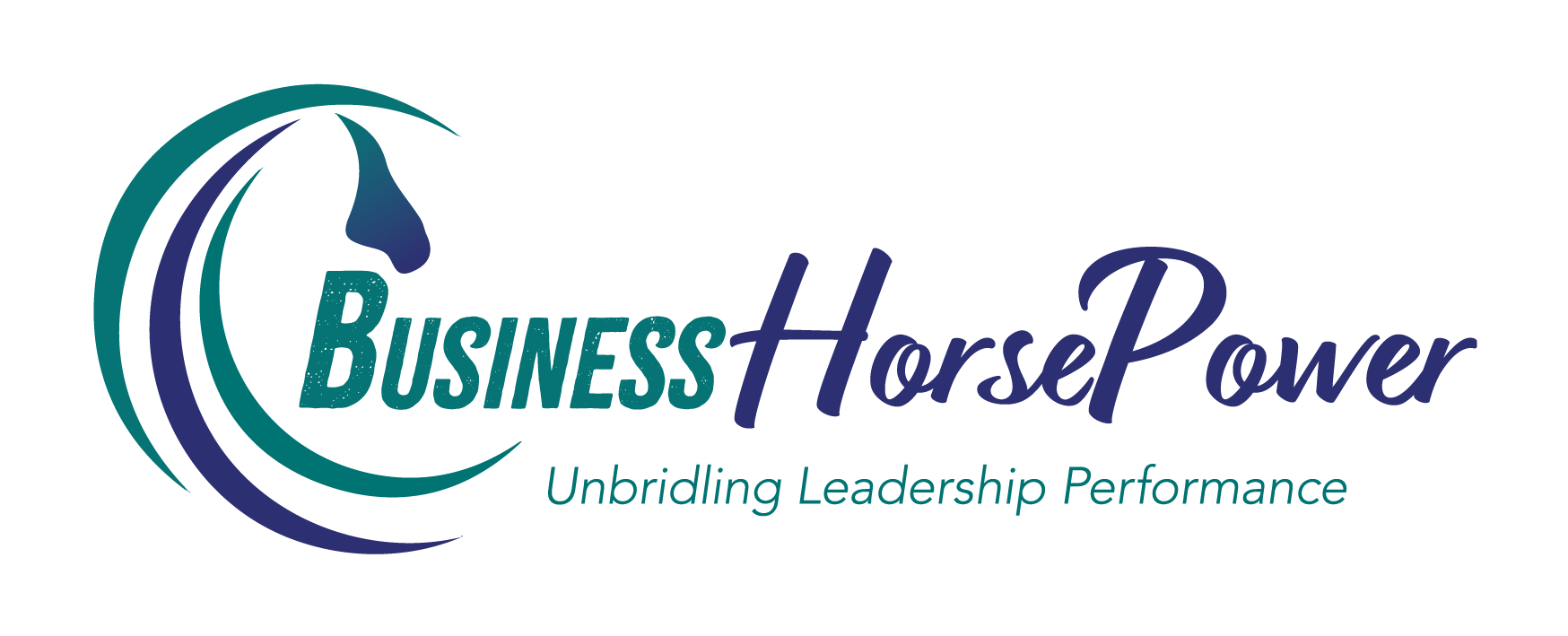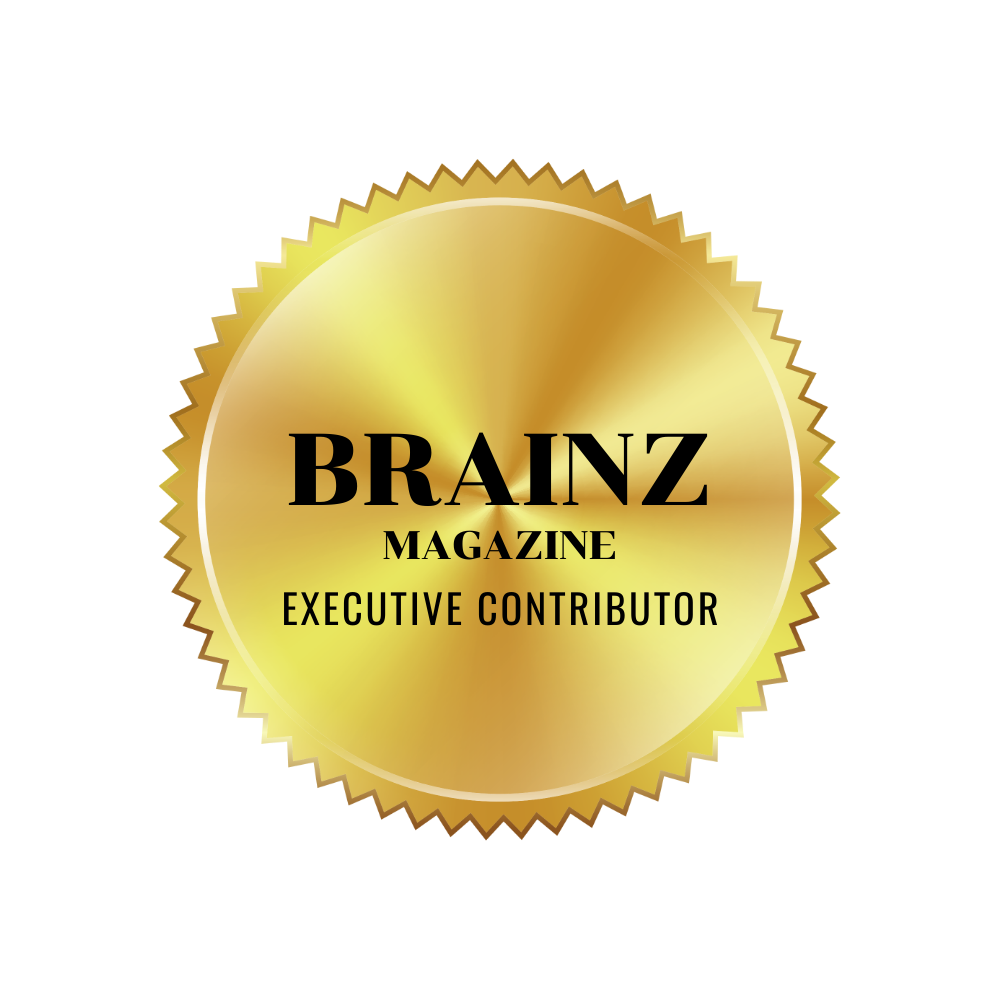
by Julia Felton | Dec 1, 2023
Having sent a large part of this month out in nature, including studying wild horses in Poland I have gained some profound insights on collaboration, cooperation, and profitability, all inspired by the wisdom of Mother Nature herself. I firmly believe that nature holds the key to solving many of our world’s problems, so I’m excited to explore how we can draw inspiration from her remarkable ecosystems to create a more harmonious and prosperous future.
In a world driven by profit margins and competition, it’s easy to overlook the incredible lessons that the natural world offers. Nature, after all, has been refining its strategies for billions of years, and it has a lot to teach us about working together for mutual benefit.
Lesson 1: Symbiotic Partnerships
One of nature’s most stunning examples of collaboration can be found in the intricate relationships between species. Take, for instance, the extraordinary partnerships between bees and flowers. Flowers provide nectar and pollen, essential for bees’ survival, while bees aid in pollination, enabling the flowers to reproduce. This co-dependency is not solely about profit for either party; it’s a mutually beneficial relationship that ensures the continuation of both species.
In the business world, we can learn from these partnerships by seeking symbiotic relationships that benefit all involved parties. Collaboration doesn’t always have to be about immediate financial gain; it can also be about mutual support, shared resources, and a long-term perspective.
Lesson 2: Ecosystem Resilience
Nature’s ecosystems are models of resilience and sustainability. When one component of an ecosystem is under stress or faces a challenge, the entire system often adapts to support it. For example, when a drought threatens a forest, the trees release water vapour into the air, creating their microclimate, which can help prevent further moisture loss.
In the business world, we can apply this lesson by fostering environments where teams and organisations adapt and support one another when facing challenges. This resilience ensures that setbacks are only temporary and can lead to greater collective success in the long run.
Lesson 3: Diversity and Inclusion
Biodiversity in nature is not just a nice concept; it’s a critical element for the health and survival of ecosystems. A rich diversity of species contributes to the overall resilience and productivity of an ecosystem. Different species fulfil various roles, each one essential to the functioning of the whole.
Likewise, in business, diversity and inclusion should not be viewed solely as a matter of compliance but as a strategic advantage. A team with diverse backgrounds, experiences, and perspectives is better equipped to tackle complex problems and adapt to an ever-changing business landscape.
Lesson 4: Adaptation and Innovation
Nature is constantly evolving and innovating. Species that cannot adapt to changing conditions face extinction. On the other hand, those that embrace change and innovation thrive. This adaptability is a powerful lesson for the business world, which is constantly undergoing technological, social, and economic transformations.
In conclusion, Mother Nature is a treasure trove of lessons that we can apply to the business world and beyond. By focusing on collaboration, cooperation, and long-term benefits rather than immediate profit, we can create a future that is not only profitable but also sustainable and harmonious. It’s time we recognise that the natural world is our most profound teacher, guiding us toward a more prosperous and balanced future. Let’s embrace these lessons and build a world where we work together, just like the ecosystems that have thrived for eons.
Julia Felton (aka The Business Wrangler) is the founder of Business HorsePower. Business leaders, entrepreneurs and executives hire her to accelerate their business performance by harnessing the energy of their people to work more collaboratively together. By aligning purpose with actions the team achieves exponential results as everyone starts pulling in the same direction.
Julia believes that business is a force for good and through designing purpose-driven businesses that leverage the laws of nature, and the herd, you can create businesses founded on the principles of connection, collaboration and community that make a significant impact in the world.

by Julia Felton | Aug 31, 2023
Increasingly business leaders are realizing that if they are to thrive in today’s volatile, uncertain, chaotic, and volatile (VUCA) economy they need to fully embrace the power of collaboration. The old models of command and control leadership fuelled by competition are simply not sustainable business models in a world where uncertainty dominates everything we do.
What is Collaboration?
The Cambridge Dictionary defines collaboration as “to work with someone else for a special purpose”. And it typically involves two or more people, teams, or organizations combining their resources to achieve the goal. It is a win-win situation where the sum of the parts ends up being more than the whole. One party contributes something that is built on and then leveraged by the other party. The end result is something much better than any of the parties could have achieved individually.
However, in my experience, many people think collaboration means one person or entity has to relinquish something to make the collaboration work. This would be an example of a win-lose relationship and that is not what we are striving for here.
Collaborative Examples In Nature
Nature understands how collaboration works and there are many examples that we can see around us. A few include:
- Ants and bees working in collaboration and in collective ways to establish their hives and colonies
- Sea anemones and clownfish cultivate cooperative relationships with each other to provide protection and nutrients
- Water buffalo have a symbiotic, collaborative relationship with egrets. The egrets pick parasites out of the water buffalo’s skin, which in turn provide a source of nourishment for them. They also provide a warning system of any impending danger for the water buffalo
One of the reasons why nature values collaboration is because it understands and appreciates the inter-dependence and inter-connectedness of everything. Nothing happens in isolation in nature. Everything has an impact on something else, which is a principle that many of us have not yet grasped. Because the reality of the situation is that everything that I do ultimately impacts and influences you in some way. You might not see the direct impact right now, but trust me it will. This is because everything in the world is comprised of energy and so each of us creates an impact ripple that expands either positively or negatively.
Collaborative Leadership
Collaborative principles can be applied to all areas of business including leadership. Long gone are the days when anyone leader can know everything there is to know. That is simply not possible in this Information Age where leaders are inundated with information. We are literally drowning it in.
A New York Times Weekly edition contains more information than the average person in the seventeenth century would have come across in their entire lifetime. In 2008 we consumed three times as much information as in 1960, and by 2020 it is estimated that we generated 44 times more data than we produced in 2015. This is why smart leaders are now embracing the concept of collaboration in leadership through a process called Shared Leadership.
Shared Leadership occurs when two or more people decide to work collaboratively together to lead the team or project. The benefit of this approach is that the “best” leader can step up and lead at the most appropriate time. For example, some leaders provide the best ideas when a project is just starting out; other leaders are better at setting and maintaining the direction; others are great at rallying the team and getting others on board; whilst other leaders are better at implementing and getting things done; finally others are better at refining and improving the product or service. Imagine how much more effective the leadership could be in your business if multiple people collaborated in the shared leadership process.
A fabulous model of how to embrace Shared Leadership exists in nature and specifically in herds of wild horses. They utilize the Diamond Model of Leadership as a way to collaborate and share leadership, using three different leadership positions.
- Leading from the front
- Leading from the back
- Leading from the middle
The lead mare sets the direction and pace of the herd from the front of the diamond formation. She pays attention to what is happening in the environment and then makes a decision on where to go next. The lead stallion keeps the herd together and protects it from predators and is positioned at the back of the diamond. He influences the energy at which the herd moves. The rest of the herd, the sentinels, cover the other two points of the diamond, and lead from the middle, covering the outer sides of the diamond. Their role is to align the herd in the direction that has been set and detect potential threats coming from the side In addition to responding to threats, the sentinels are often the ambassadors of the herd and are the first to welcome new members.
The ever-present goal of herd leadership is health, harmony, and unity. With the unpredictability that nature ensures, herd leaders are often presented with challenges that require them to either reposition themselves to respond to changes in the environment or possibly even change roles to leverage their strengths differently. For example, when a threat emerges, like the new presence of a stranger or predator, the sentinel will often move from the center of the herd to the front where the threat appears. The sentinel will often redirect the herd away from danger. Once the lead mare senses the direction to safety, she will emerge back in front of the herd to set the new course. Once safe movement begins, the sentinel will return to the centre position.
Collaborative leadership has enabled horse herds to exist for over 50 million years as they have learnt to adapt and evolve to thrive in the uncertain environments they have experienced.
I’d love to hear from you about other collaborative relationships you’ve seen in nature and how you can apply these to your business.
Julia Felton (aka The Business Wrangler) is the founder of Business HorsePower. Business leaders, entrepreneurs and executives hire her to accelerate their business performance by harnessing the energy of their people to work more collaboratively together. By aligning purpose with actions the team achieves exponential results as everyone starts pulling in the same direction.
Julia believes that business is a force for good and through designing purpose-driven businesses that leverage the laws of nature, and the herd, you can create businesses founded on the principles of connection, collaboration and community that make a significant impact in the world.
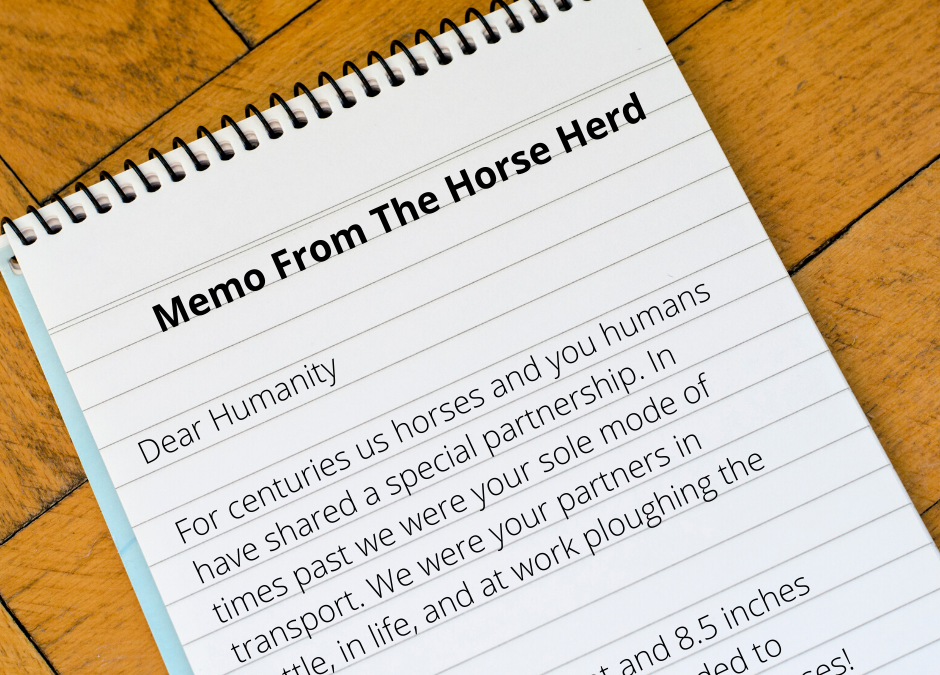
by Julia Felton | Apr 10, 2020
Dear Humanity
For centuries us horses and you humans have shared a special partnership. In times past we were your sole mode of transport. We were your partners in battle, in life, and at work ploughing the fields. The railroads are 4 foot and 8.5 inches wide as that is the width needed to accommodate the width of two horses! Our partnership has thrived since the beginning of time and we have worked harmoniously together until you designed those crazy motor vehicles.
With the car you literally sped up your life. You started charging about with little or no sense of purpose. You forgot to stop and pause. You became insular and disconnected from each other and eventually over the years your communication began to disintegrate as you lost the sense of unity, trust and collaboration.
We know that you humans are going through a tough time right now and we horses are here to help you return to your own innate state that you have all forgotten. Would you let our principles of living help guide you to re-connect, re-kindle renew and nourish your soul, as we help you align with the basic principles of nature and the Universe.
Let us share our wisdom of survival and how we have had to adapt to survive over millions of years. After all we’ve been on the planet for over 55 million years and you humans for around 6 million years.
Not since saber tooth tigers and woolly mammoths died out, have you ever been in the position of being the prey. Typically, you live daily as the predator creature on the planet. The coronavirus (COVID-19) is treating you as its prey. You can’t control it and it is impacting your daily lives. Some of you are scared, afraid and uncertain of what to do. No-one on the planet today has experienced a situation like this before, we understand. All our lives we have been prey animals, literally fighting for our lives on a daily, hourly and minute by minute basis, but it is this that has made us strong, powerful, adaptive and creative. We understand your fears and anxieties, so let us share with you the practices that help keep us safe.
- Stay Present, Aware and Grounded. Live in the moment. You never know what is round the corner so be grateful of what you have now.
- If Others Frustrate You, Say Your Piece and Go Back To Grazing. Now is not the time to hold grudges. By living in the moment and focusing on each second and minute you can’t stress about the past or the future.
- Care For Each Other: Look after your herd members and keep them safe. Foster community spirit, unity and harmony.
- Step Up and Play Your Part: In the herd we are all responsible for ensuring the safety of the group. If we don’t do our role we can put the safety of the herd of risk. That is why we are punished with exclusion from the herd. Believe us that this is a really scary place to be as you are alone and afraid for your safety. So co-operate with each other and listen to the guidance of your elders.
- Act With Integrity and Trust The Process: Know that this challenging time will pass and you’ll have the opportunity to design a different world, one more in harmony with nature.
- Know That We Trumps Me Any Day: Foster the spirit of the herd and know we are in this together and can only survive if we work together. Any self-serving behavior (hoarding of toilet paper!) will only serve to alienate each other.
- Slow Down, Be Grateful and Appreciate All You Have: Often you only appreciate things when you no longer have them. As horses we love to hang out together doing something and nothing but we observe you humans never stop. You’re always doing something. We invite you at this time to slow down and reflect. Remember everything in the Universe has a rhythm and this provides certainty. The sun rises and falls daily, the seasons change with regularity throughout the year yet humanity lives at full throttle, pedal to the metal day in day out, and then you flat line as your energy burns out. You’re not designed for this and whilst you know it you can’t seem to get off the treadmill. Use this as a time to make that switch.
- Remember We Are All Part Of The Ecology Of The Planet: We are all inter-connected and inter-dependent. The current crisis is showing you that most clearly. Everything you humans do has a ripple effect. Become aware of how your ripple impacts others because it does even if you’re not consciously aware of it.
Humanity, the coronavirus pandemic is providing you with the gift to wake up and become more aware of the rhythms of nature. For everyone who has been sleep walking your way through life, we urge you to enjoy being in the moment, to slow down and become more aware of your impact on others. We invite you to become more horse like!. Let us show you the principles of how to live in harmony and unity with each other and nature. Let us help you return to your roots and find your unbridled spirit.
We know you can do it. Will it be easy, no, but the results will be transformative and spectacular for all of us – humanity, the animals, plants and planet. Let us help you, our life-long partner navigate these challenging times. Leverage our wisdom to help you create your success and thrive once again.
To Your Unbridled Success
The Herd.
Julia Felton (aka The Business Wrangler) is the founder of Business HorsePower. Business leaders, entrepreneurs and executives hire her to accelerate their business performance by harnessing the energy of their people to work more collaboratively together. By aligning purpose with actions the team achieves exponential results as everyone starts pulling in the same direction.
Julia believes that business is a force for good and through designing purpose-driven businesses that leverage the laws of nature, and the herd, you can create businesses founded on the principles of connection, collaboration and community that make a significant impact in the world.
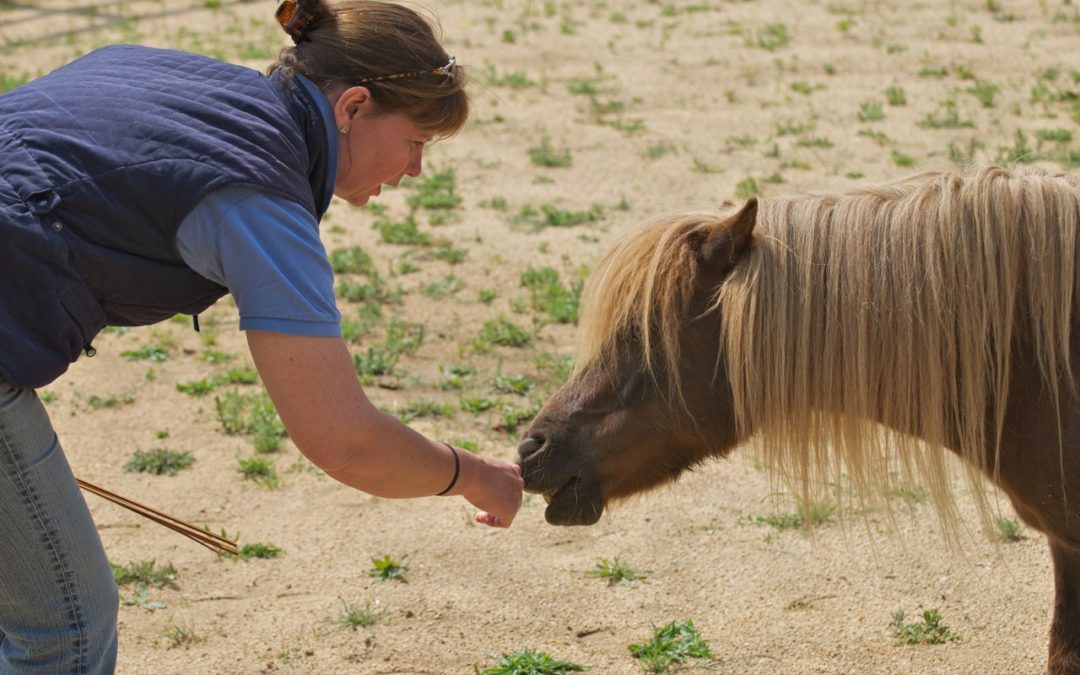
by Julia Felton | Jan 16, 2018
“What can horses teach me about authentic communication” and the answer is lots. When partnering with the horses:
- you get the opportunity to drop into the space of “horse time”. Away from the stresses and strains of daily life you are able to slow down, reflect and experience the power of real connection
- you have to communicate with your heart and not your head. All authentic communication starts with a heart felt connection and the horses are masters at letting us know how true we are being to ourselves
- you have to be present, grounded and paying attention. If you don’t the horse will simply ignore you
- you get to experience the power of non-verbal communication and how it can influence others
- you experience how emotions can disrupt the communication channel
The great thing about learning from horses, who are master communicators, is that you will learn how to synchronise your intention – mentally, emotionally and physically. You will get unbiased, immediate feedback on your communication style. And importantly if what you are doing isn’t working you get the opportunity to recalibrate and try a different approach. Interacting without verbal communication allows participants to discover a whole new world in the process!
Working with horses demands that you be very clear in your communication both verbal and non-verbal. Horses do not understand words and therefore rely on reading body language and energy. You will experience how to align your energy in such a way that your communication becomes clear and concise.
What type of world or work environment do you create for yourself through your communication? Is it supportive, inspiring and powerful or could it be improved? When you start using this new knowledge with others they will feel motivated, excited and willing to work with you, which will lead to new levels of performance.
To discover more how horses and help you develop your authentic communication skills (and leadership and team working skills too) lets have a chat. You can book into my diary here or better still join us on the next Art of Authentic Communication workshop.
Julia Felton (aka The Business Wrangler) is the founder of Business HorsePower. Business leaders, entrepreneurs and executives hire her to accelerate their business performance by harnessing the energy of their people to work more collaboratively together. By aligning purpose with actions the team achieves exponential results as everyone starts pulling in the same direction.
Julia believes that business is a force for good and through designing purpose-driven businesses that leverage the laws of nature, and the herd, you can create businesses founded on the principles of connection, collaboration and community that make a significant impact in the world.
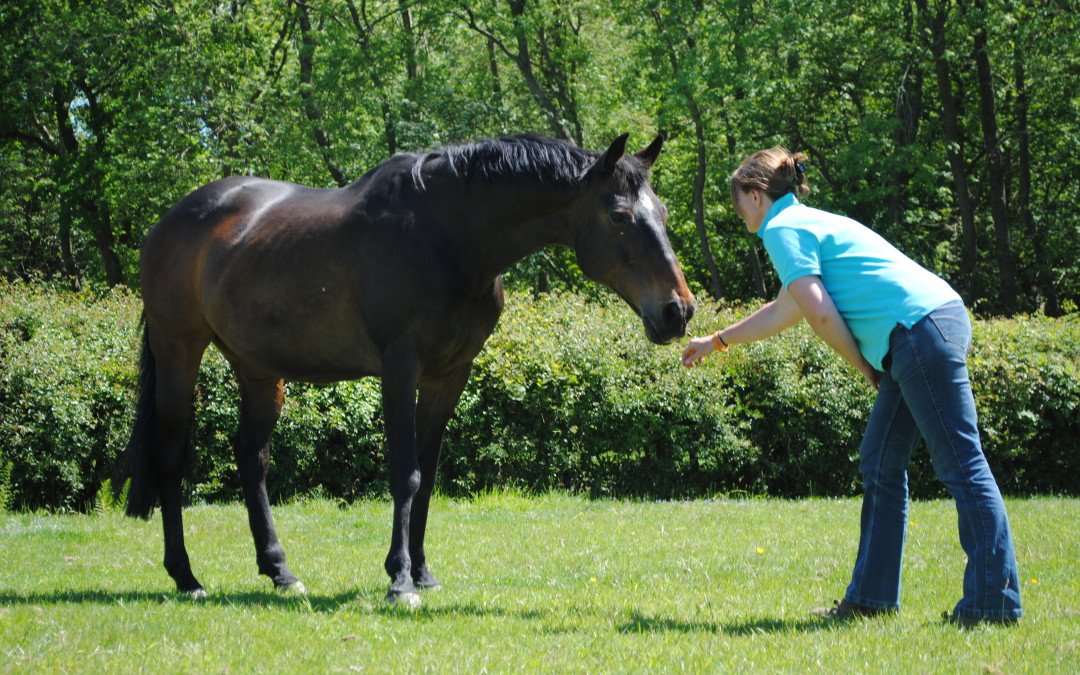
by Julia Felton | Jan 3, 2018
Communication skills are vital to our success in business and life, and yet how many of us appreciate the unless we communicate authentically we may well be sabotaging our own success. When we fail to communicate effectively team members, colleagues, clients, suppliers and family members can get frustrated leading to stress and anxiety. And just like poor communication can have a negative ripple effect within the business, authentic communication can actually help businesses become more collaborative, innovative and creative leading to greater productivity and profitability. And its the same with your family and friends too.
So Why Is Authentic Communication Important?
Authentic Communication is a heart-centred way of communicating in which you allow your Authentic Self to do the talking and listening instead of your fear-based Ego. When we engage in authentic communication we move from just being in a transactional relationships to forming real human connection. One where the other person feels acknowledged and heard. Authentic communication is a pre-requisite for success in organisations, businesses and in any project as it allows for transparency and speed in communications.
When you communicate authentically you are able to express yourself productively and become curious in the other person’s perspective and how they are feeling about the situation. You are clear about your values and your core truth and from this place you are able to achieve different results. When leaders communicate authentically this has a profound effect on the business because the culture of the organisation is created by what people do and who they are. When leaders and team members operate from a place of authenticity then:
- trust increases
- team members feel more valued and engaged in their work
- connection and rapport improves
- it breaks down the silo mentatlity in business
- there is more collaberation and sharing of resources
- the workplace is happier as the air is “clearer”
- the business culture starts to focus on ‘we’ rather than ‘me’ as barriers are broken down
- the inside of the business matches the outside
Business relationships prosper when people trust each other, information is freely and generously exchanged and relationships are vibrant. However communication whilst simple is not easy. It is multi faceted and complex especially when one considers that so much is communicated by our body language. So unless our body language and our words are aligned and congruent the message simply will not be heard.
Surprisingly, happiness is an added benefit of authentic communication. Psychologist Sidney Jourard, found that 85 percent of a person’s happiness in life comes from happy interactions with other people. The reverse holds true as well: 85 percent of a person’s unhappiness or problems in life comes from difficulties in getting along with others
So if you are interested in honing your authentic communication skills I encourage you to join me and Tessa Gray later this month for our unique Art of Communication workshop. This is no ordinary workshop as your teachers will be Julia’s herd of horses, who are master communicators. They will test and challenge the clarity, congruence and connection of your communication, and rest assured you will leave the day more fully aware of the non-verbal impact you have on you communication success. After all, like everything else in life, communication begins with you.
Julia Felton (aka The Business Wrangler) is the founder of Business HorsePower. Business leaders, entrepreneurs and executives hire her to accelerate their business performance by harnessing the energy of their people to work more collaboratively together. By aligning purpose with actions the team achieves exponential results as everyone starts pulling in the same direction.
Julia believes that business is a force for good and through designing purpose-driven businesses that leverage the laws of nature, and the herd, you can create businesses founded on the principles of connection, collaboration and community that make a significant impact in the world.
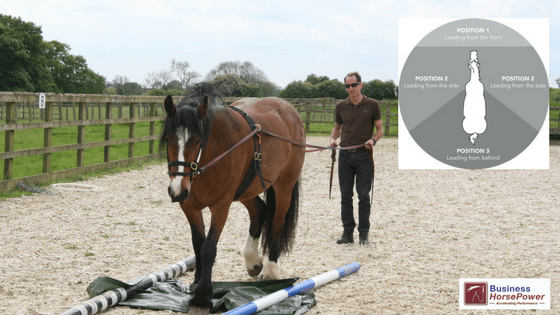
by Julia Felton | Jun 7, 2017
One of the biggest insights that has been coming up for people recently, whilst attending my leadership workshops, has been related to their preferred leadership position. Very often when we think of leadership we assume that the leader has to be at the front, leading the charge. And yes the leader does need to set the direction for the business, but they don’t need to stay in that leadership position all the time. Sometimes they might find that leading from the back, or indeed the side might be a better solution.
So What Are The Three Positions of Leadership?
In his book Dances With Horses, Klaus Ferdinand-Hempfling identified three positions of leadership that operate on a pull-push basis and when used appropriately can achieve significant results. Position One is Leading From The Front. This leadership position is most effective in an emergency, when you need people to follow you with no negotiation. It is also a great leadership position for the CEO of a business who needs to set the strategy and direction of the business and show others where to go. However, for team members it can dis-empower them as there is no flexibility to make decisions.
Position Three is Leading From Behind. From this position you can see everything happening in front of you and so can easily course correct if things go off track. It’s a leadership position where you effectively orchestrate the energy of the group and add momentum to what is happening. Team members feel empowered however, unless the team know where you are heading, chaos can erupt as everyone heads in different directions.
Leading From The Side is Leadership Position Two. It is a very collaborative style of leadership and a great place to be to form connection with your team members. It is the place of true partnership, and is a role that all great leaders must engage in to build relationships. However, if a leader stays in this position for too long nothing gets accomplished as no-one is leading the process.
The three different positions of leadership are derived from the way that a wild horse herd operates. Typically what you will find is that within the herd there is a lead mare who operates at the front of the herd and it is her job to find suitable grazing for the herd. She navigates where to go based on the weather conditions and the needs of her herd. Do they need food, water, shelter? Whatever they need she seeks out for them.
However, in the herd leadership is not a one horse job. It is shared and this is why you will always find the lead mare working in collaboration with the lead stallion. He positions himself at the back of the herd. From here he has great perspective on what is happening in front of him. He is easily able to keep an eye out for approaching danger and keep the herd united by influencing the direction and pace that everyone is moving in.
When grazing the lead mare will often mingle with the herd and adopt leadership position two whilst checking in to ensure the rest of the herd are safe.
Great leaders recognise that the art of great leadership is knowing when to adopt each leadership position, and be able to effortlessly move between the different positions as required. That said, in my experience leaders often have a preference for one position of leadership over another. Do you know what yours is?
Once you know your preferred leadership position you can then enlist the support of others with differing preferences to help you share the leadership role. After all I think we would all agree that in todays rapidly changing environment there is simply no way that just one person can shoulder all the leadership responsibility. It needs to be Shared amongst the team, so that everyone takes responsibility and contributes to the business success.
This is what one of my clients realised after learning about the three different leadership positions: “No wonder I’m exhausted. I’ve being trying to perform all three leadership roles myself. I now see how one minute I’m setting the business strategy (position one) then I’m running back to position three to energise the business, then back to position one, and then next position two. Now I recognise this I can see how I need to enrol others to help me share the leadership. This will give me more energy and focus and help us make our team more productive”.
If you would like to experience the three different leadership positions and discover your preferred role, then why not join me on my next open workshop, where we will be exploring how to Lead On-The-Hoof and develop the leadership skills you need to be successful in today’s environment. Simply click here to find out more.
Julia Felton (aka The Business Wrangler) is the founder of Business HorsePower. Business leaders, entrepreneurs and executives hire her to accelerate their business performance by harnessing the energy of their people to work more collaboratively together. By aligning purpose with actions the team achieves exponential results as everyone starts pulling in the same direction.
Julia believes that business is a force for good and through designing purpose-driven businesses that leverage the laws of nature, and the herd, you can create businesses founded on the principles of connection, collaboration and community that make a significant impact in the world.
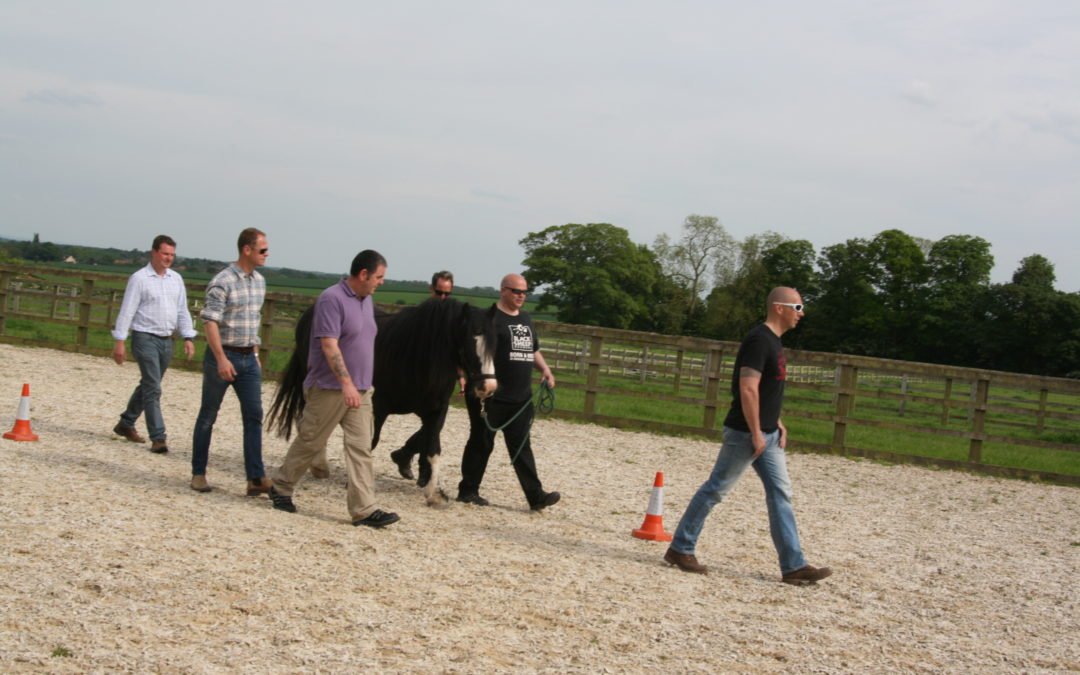
by Julia Felton | May 31, 2017
2017 Summer Team Building Programs
Transforming Leaders and Teams
♦ through natural horsepower ♦
Summer is just around the corner – which means now is the perfect time to plan your team building event. Great leaders know that when team members have a chance to connect and build relationships, it can have a profound effect on team cohesion and productivity. They also know maintaining an effective team is a continuous process and it’s important to consistently make sure their team is working well together. Are you looking for something that:
- Is new and different, and, combines fun with purpose?
- Deepens positive interaction and connection between your team?
- Serves as a catalyst for more team chemistry?
- Harnesses the best of your team?
- Allows you, the team leader, to participate fully with your team?
Then get your team out of the office and into the field for an experience they’ll never forget!
Call now to schedule your Half-Day, Full-Day Session or to discuss our Retreats!
When you decide to bring your team out to the Business HorsePower herd (or ask us to come to you, which we can often do), we work with you to understand your team’s needs and design a customised experience that meets your objectives. Your team will engage in a variety of activities that seem simple, yet offer complex lessons in collaboration, partnership, trust, and commitment. Sessions are a combination of individual and small group exercises with the horses; observation, personal reflection and group discussion; individual, coaching and peer feedback. We can also:
- Administer team trust or team dynamic assessments. Or, incorporate your existing team or leadership assessments tools.
- Reinforce through our curriculum any current team or leadership development program you currently have in place.
- ‘Book end’ your team building with horses session with pre-session facilitation to more deeply prepare you, and, web-based post-session follow up to sustain your team’s learning.
Horses are Team Players
- They live in teams and have a sophisticated understanding of team work – their interactions with your team will reflect your team’s dynamics.
- If you want a horse to cooperate and follow you, you must make a genuine connection with them and demonstrate your commitment to partnership.
- They seek out and willingly respond to trustworthy leadership.
- Horses pick up nonverbal messages that we miss, or are unaware of giving. They give us clear feedback on when we’re effective – and when we’re not!
The Benefits of Team Building
There are many benefits to team building and these include:
- Gaining valuable insight into emotional intelligence and its impact on leadership, relationships and team productivity.
- Practicing problem-solving ‘on the go’ and in the face of new challenges and uncertainty.
- Becoming more focused and present as a team.
- Creating effective and loyal followership; inspire commitment.
- Deepening awareness of where your team gets stuck and learn how to shift ineffective behavior patterns.
I invite you to join me this summer for a team development experience with horses. I guarantee my work. If you feel the session does not meet your expectations, tell me by lunch time and you’ll receive a 100% refund.
To find out more simply give me a call on +44 1423 788229 and we can then co-create an experience that delivers a massive ROI for you and your team.
If you are a private individual then our next open programme which is on June 23rd might be better for you. You can find all the details here.
I can’t wait to hear from you.
Julia Felton (aka The Business Wrangler) is the founder of Business HorsePower. Business leaders, entrepreneurs and executives hire her to accelerate their business performance by harnessing the energy of their people to work more collaboratively together. By aligning purpose with actions the team achieves exponential results as everyone starts pulling in the same direction.
Julia believes that business is a force for good and through designing purpose-driven businesses that leverage the laws of nature, and the herd, you can create businesses founded on the principles of connection, collaboration and community that make a significant impact in the world.
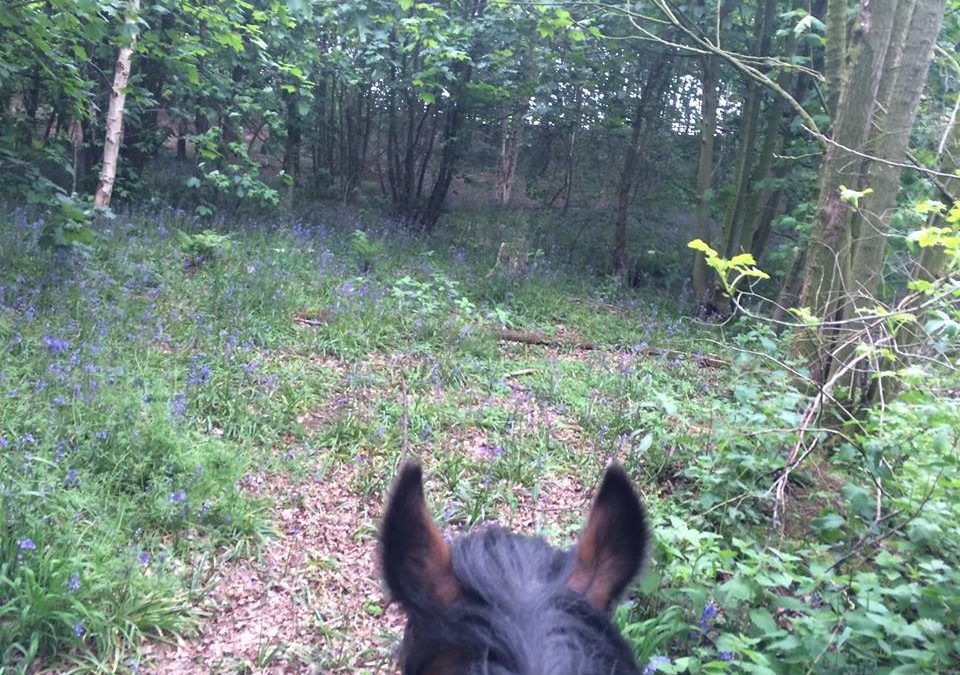
by Julia Felton | Jun 19, 2016
“Judge a man by his questions rather than his answers.” Voltaire
If you don’t know the answer, ask better questions. When we get stuck it is often because we are looking at the challenge through a single lens. We can only see one perspective on the issue and therefore we can’t find the answer. When you learn to ask better questions you are able to open up a raft of other possible options and in time a solution can just magically appear.
I remember a number of years ago using this technique when deciding whether I should keep my horse Charlie. I had him on a three month loan contract and the three months was coming to an end. I just couldn’t decide what to do, as the two options presented to me were that I should buy him or else give him back. I wasn’t happy with either of these options. I was stuck in what decision I should make. I was getting really frustrated.
At the time it didn’t occur to me that there might be some other options. There are always options because I was looking at the situation through my lens – the lens of self. What I had failed to realise was that there were at least two other perspectives. What if I looked at the situation through the lens of Charlie’s owner – the lady I had him on loan from. What would be her thoughts?. Or what would be the observations of a friend or an outsider looking in on the problem. When I looked at my situation through these two different lenses I was able to ask much better questions and so find new solutions.
From the lens of the Charlie’s owner I was able to realise that they really wanted him to have a good home and that was more important than the sale. I also realised that they didn’t really want him back as that would have cost them money. Although they would like to sell him it was infact better for them not to have him back. From the perspective of observer I appreciated that there was a solution that was mutually beneficial to both of us. We could extend the loan term and see what transpired. Extending the decision making process was important to me because at the time Charlie had been suffering from some injuries and I was not sure what the outcome would be. I didn’t want to buy him only to discover that the injuries would not heal, but at the same time he had a big heart and I knew that I could really help him.
This way of looking at challenges and asking better questions is called Positions of Empowerment, and it really helps give a different perspective on all situations. Try it now. Imagine or draw on the floor a triangle. Make the apex the position of the observer. The left hand bottom corner is the perspective of self and the right hand corner the perspective of other. Now literally step into each of these positions and see what questions emerge, and therefore what answers come up.
When I did this exercise about my ownership of Charlie what came up would be that I could ask the owners for an extension to the loan period, That way I could get Charlie through his injuries and then make a sensible decision to buy him based on the outcome. This was never something I had initially considered. Before doing this exercise I had foolishly assumed that the only two options were to buy him or return him. And yet there are always other alternatives if we just stop, ask better questions and then reflect on the outcome to these.
When we ask meaningful questions, we step back so others can step up and think things through for themselves. The art of questioning enables dynamic and critical think-through. Finding relevant questions uncovers and reveals richer, more relevant answers.
One of the challenges is that we have often been brought up not to question things – I know I was – so being curious is a habit that I have had to develop. As the Chines Proverb goes:
“He who asks a question is a fool for five minutes. He who does not ask a question remains a fool forever.”
So here are 10 ways you can stimulate greater appreciation for asking questions:
- Learn to listen actively; don’t just wait to be heard.
- Ask yourself while listening, “What’s trying to happen here?”
- Supportively challenge assumptions without being presumptive.
- Question what’s behind the issue being focused on.
- Gain buy-in during meetings for specific time to explore alternative points of view
- If asking questions appears to irritate, seek to understand the irritation.
- Encourage thinking that isn’t based on assumption.
- Understand how others think and how they approach problem solving.
- Ask, “What questions should we be asking that we’re not asking?”
- Don’t be afraid to appear ignorant?
Now in my case with Charlie I did extend the loan agreement for another six months. Charlie’s injuries did not improve. It turned out he has arthritis in his joints from his racing career and was technically lame on three legs He was never going to be riding horse I had hoped he would. When I learnt this I spoke with the owners and was able to purchase him for the nominal sum of £1, because although he was not rideable I knew he would be an excellent horse for the leadership work I do with horses.
So as a result of asking better questions and getting a different perspective on that situation I was able to save myself a lot of money and heart ache by not having paid full sales price for Charlie and then feeling resentful when he was diagnosed with arthritis. In fact we created a win-win situation where the owners no longer had to care for him and I had a horse that I knew could add amazing value to my leadership programmes.
So what better questions can you ask today? Be curious and you might be really surprised by the results.
Julia Felton (aka The Business Wrangler) is the founder of Business HorsePower. Business leaders, entrepreneurs and executives hire her to accelerate their business performance by harnessing the energy of their people to work more collaboratively together. By aligning purpose with actions the team achieves exponential results as everyone starts pulling in the same direction.
Julia believes that business is a force for good and through designing purpose-driven businesses that leverage the laws of nature, and the herd, you can create businesses founded on the principles of connection, collaboration and community that make a significant impact in the world.
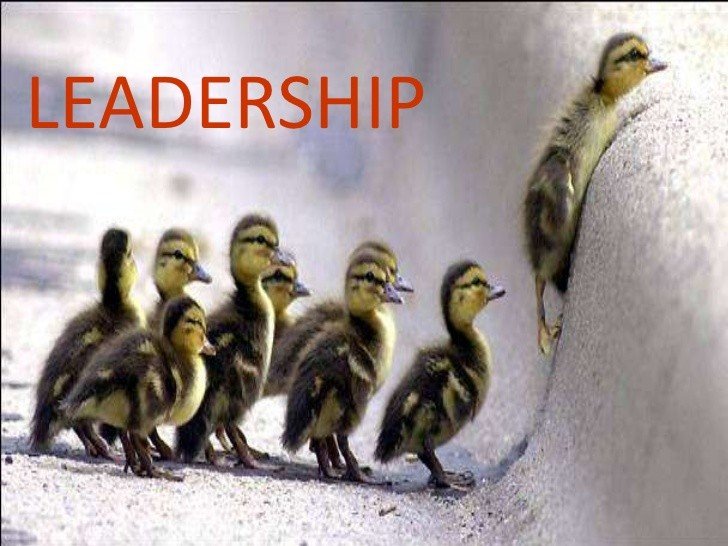
by Julia Felton | Apr 10, 2016
‘Before you are a leader success is all about growing yourself. When you become a leader, success is all about growing others.’ Jack Welch
A recent survey conducted by Emergentics International revealed that Leadership development is the number one priority of HR and organizational development leaders, with 25% of respondents putting it at the top of their priority list. With organizations needing to meet ever-higher financial goals and growth targets, the emphasis on people development provides a window into the way companies are seeing their ability to rise to the top.
The emphasis on talent development and management over competencies like innovation and tactical elements like metrics points to a realization that positive advancements in organizations must start with people. The second highest response for organizational priority was employee engagement, at 22%.
So what is leadership? The Oxford Paperback Dictionary defines a leader as ‘one whose example is followed’. Leadership is that elusive quality that companies are looking for and yet, in my opinion, is so often lacking in organisations. Given the multitude of companies offering leadership training and the circa £3billion spent on external training annually in the UK, how come our companies are not some of the best performing in the world? To my mind, leadership and management are too often confused. We expect managers to lead and yet leadership and management involve completely different skill sets. Indeed, the Peter Principal invariably plays out in organisations. The Peter Principal states that ‘people are promoted to the level of their incompetency’. This is why all too often people get promoted only to fail in their managerial role because what they really need are leadership skills.
Complete leadership starts with the vision and builds relationships with the people that share the vision and who will take on the task of achieving the vision. This differs from management which uses structures, rules and processes in order to control and predict results in a more stable situation. Frank S. Greene notes that ‘the success of management is seen in the industrial empires where people can be used interchangeably and as replaceable parts.’
In order for any business to be successful it needs strong leaders and particularly so in this age of globalisation because whilst an individual might be able to mask their lack of leadership skills in a small organisation, in my experience once they have to manage across multiple locations they will be found out. Great leadership involves developing a blend of vision, relationships and execution and as an organisation expands, the need for the leader to communicate that shared vision to a diverse set of people becomes paramount because unless the vision is shared, the organisation will never meet its goals. It will become like a ship bobbing up and down on the ocean with no clear direction of where it is heading and wonder why the business fails to move forwards.
Horses Always Ask – Who is Leading?
So how can Horse Assisted Coaching help people develop leadership skills? The answer lies in the fact that horses are always looking for a leader. As a prey animal, the horse always has to be aware of imminent danger or else he could end up as someone else’s lunch. This means that a horse always has to be alert to any danger in his surroundings and also be in a position to run away should that danger present itself. To ensure that the horse can survive being a prey animal it has evolved so that its natural behaviour and physiology can keep it as protected as possible. This is why horses have eyes on the side of their head, as it gives them nearly 360 degree vision to see any approaching danger. They are also acutely aware of any changes in their environment, as this could herald the onset of approaching danger. The sense of community and camaraderie they gain from living in herds also helps keep horses safe. I’m sure you’ve heard of the idiom ‘Safety in numbers’ – well, this is the premise that horses work from. The more of them that are together, the more eyes they have looking out for danger and so the safer they feel.
It is because of this desire to stay safe that a horse is always looking for a leader. Can you imagine living by yourself, never being able to rest and relax for fear of being attacked and eaten? This is a tiring place to be and the reason why a horse is willing to let us take up the leadership role with them. However, and this is a really big thing, we must prove to be a leader who can be trusted and who knows what they are doing. If we have no clarity or certainty and don’t evoke a sense of trust from the horse then he will not let us lead him and he will take over the leadership position. You see, unlike people who might be quite polite when their boss is not being a clear, decisive leader, a horse has no option but to act, his life depends on it, whereas in a business we continue to tolerate poor leadership until such time that the leader is removed from that position – ironically often promoted to another position.
Different from humans, horses don’t follow blindly, yet they are looking to be led. They cannot be coerced or influenced, they choose to follow. Horses have survived for thousands of years due to their ability to get along with, and depend upon, one another. They test each other to establish their position within the herd, deferring only to other horses they feel will keep them safe. In a world in which money, control and status are non-existent, horse leaders respond immediately to the thoughts, feelings and sometimes hidden agendas of those around them, and communicate with authority, purpose, authenticity and confidence – all without ‘saying’ a single word. Like some employees, horses can either be willing participants or resentful ‘herd members’, making them ideal partners for teaching self-leadership and teamwork.
Want to learn more about how horses can help you make systemic leadership changes in your organisation, then give us a call or connect with us at connect@businesshorsepower.com
Julia Felton (aka The Business Wrangler) is the founder of Business HorsePower. Business leaders, entrepreneurs and executives hire her to accelerate their business performance by harnessing the energy of their people to work more collaboratively together. By aligning purpose with actions the team achieves exponential results as everyone starts pulling in the same direction.
Julia believes that business is a force for good and through designing purpose-driven businesses that leverage the laws of nature, and the herd, you can create businesses founded on the principles of connection, collaboration and community that make a significant impact in the world.
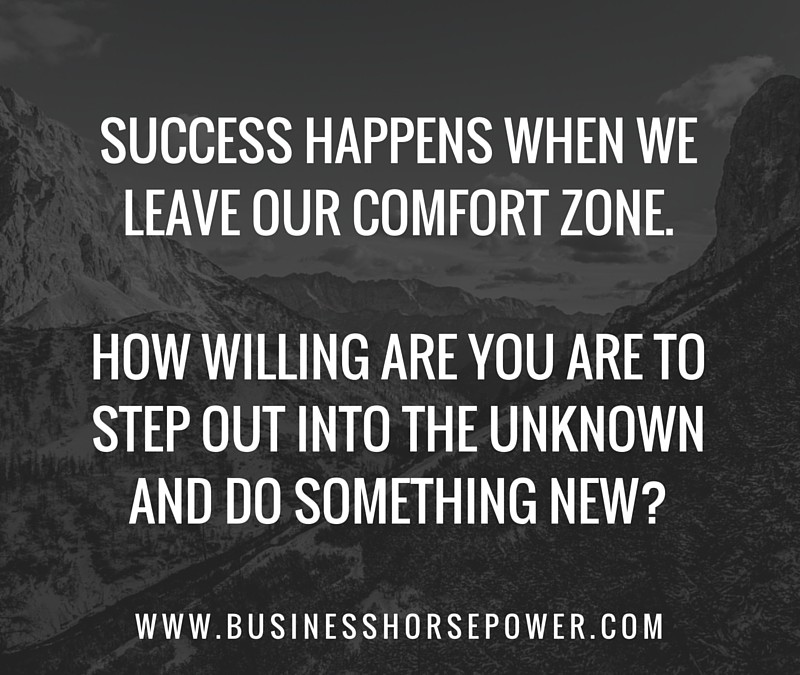
by Julia Felton | Jan 27, 2016
One of the things I always challenge my clients to do is to step out of their comfort zone and try something new. For many people just coming to an experience with the horses is the start of that stretch. In fact sometimes just the mere thought of doing this can send people into a tail spin.
That was certainly the experience of some of our clients earlier this month. As soon as they learnt that the next module of their leadership programme was with horses all kinds of doubts and fears set in. To the extent that three people actually cancelled their attendance at the event.
It always surprises me the reaction of people to the leadership work with horses. Some totally embrace it and see the experience as a stretch and to try something new outside their comfort zone, whilst for others it puts them into a state of fear and panic.
The one thing that I do know from personal experience is that unless we challenge ourselves to do something new, we never grow and develop. We never expand and change.
Now I also appreciate that everyone’s comfort zone is different and as a skilled facilitator we need to manage the experience and so not take people into a place of paralysis and fear, but rather move them forward step by step so that their own personal comfort zone expands. Because ironically what happens is that if we don’t stretch and challenge ourselves our comfort zone becomes smaller and smaller.
Last night I stretched myself ou of my comfort zone by holding my book launch at the Institute Of Directors in London. I would describe myself as a pretty accomplished speaker but to be honest I have always spoken supported by a powerpoint presentation. Last night no powerpoint was allowed. When I first heard this I was afraid that I wouldn’t know what to say and momentarily thought about pulling out. But I didn’t. I “pulled on my big girl panties” and stepped into the spotlight. And you know what. With no notes to distract me I got really connected to my audience and delivered one of the best talks I have done in long time.
I am now so grateful for that experience as it has helped me prove to myself that I do not need the crutch of a powerpoint presentation to deliver compelling and inspiring content.
So what are you going to do today to step out of your comfort zone and do something different?. I’d love to hear about it on the facebook group.
Have an inspired rest of the week.
Julia Felton (aka The Business Wrangler) is the founder of Business HorsePower. Business leaders, entrepreneurs and executives hire her to accelerate their business performance by harnessing the energy of their people to work more collaboratively together. By aligning purpose with actions the team achieves exponential results as everyone starts pulling in the same direction.
Julia believes that business is a force for good and through designing purpose-driven businesses that leverage the laws of nature, and the herd, you can create businesses founded on the principles of connection, collaboration and community that make a significant impact in the world.


